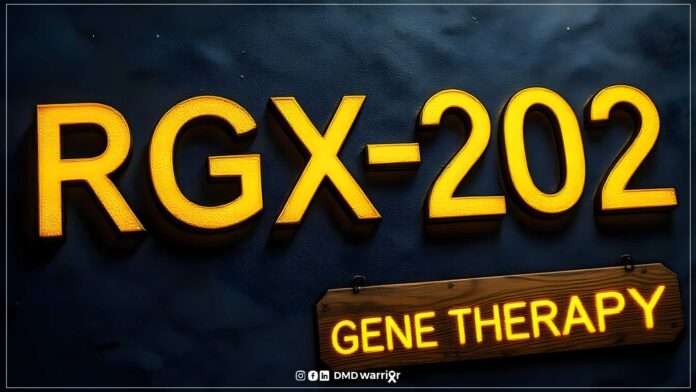At the American Academy of Neurology Annual Meeting, which took place in San Diego from April 5–9, 2025, the study findings of RegenxBio’s RGX-202 gene therapy—which is presently undergoing clinical trials for the treatment of Duchenne Muscular Dystrophy (DMD)—were assessed.
In ambulatory boys with Duchenne muscular dystrophy, two dose levels of a single-administration RGX-202 gene therapy were well tolerated and resulted in functional gains, according to preliminary results. [NCT05693142]
Key Findings from RGX-202 Gene Therapy
- RGX-202 was safe and well-tolerated in all 12 patients at two different doses with no serious adverse events.
- The treatment led to timed function test improvements vs. a natural history cohort.
In a phase 1/2 clinical research, Veerapandiyan and associates evaluated the short-term safety, effectiveness, and tolerability outcomes of RGX-202, an experimental, single-administration IV microdystrophin-expressed AAV gene therapy, in a group of ambulatory boys. [Read More: Affinity Duchenne Trial Of Rgx-202 Gene Therapy]

Twelve boys between the ages of one and under twelve who could walk without assistance, had a genetically confirmed diagnosis of Duchenne muscular dystrophy (DMD), and showed no signs of antibodies before receiving gene therapy were included in their 12-month trial.
Every subject received therapeutic administration, a muscle biopsy, and an assessment of their muscular function at baseline. Participants who were 4 years of age or older underwent cardiac and skeletal MRIs.
Three months after administration, a muscle biopsy and evaluation of muscle function was place, with follow-up evaluations planned at six, nine, and twelve-month intervals.
Follow-up is anticipated to run up to five years, even though the evaluation term for RGX-202 is twelve months, during which time safety will be regularly checked.
Interim data show that none of the 12 DMD patients experienced any significant adverse events or serious adverse events of interest for any age group at either dose. The only side effects mentioned were exhaustion, nausea, and vomiting, all of which went away in due course.
Additionally, when compared to a natural history cohort at 9 months at dosage level two and at 12 months at dose level one, the researchers found that therapy with RGX-202 resulted in improvements as measured by mean change in the North Star Ambulatory Assessment and timed function tests.
Additionally, the data demonstrated that RGX-202 significantly increased microdystrophin expression at dose level one in patients between the ages of 4 and 7 and dose level two in patients between the ages of 1 and 3.
Learn More: Potential Upcoming New Gene Therapies for Duchenne Muscular Dystrophy



